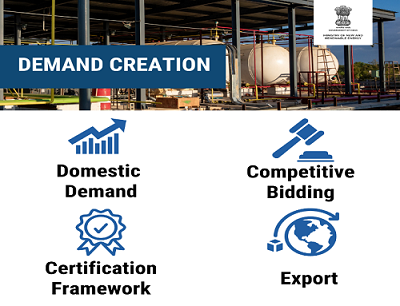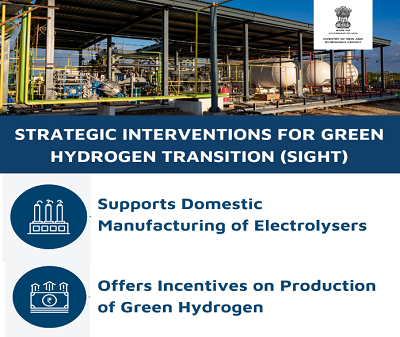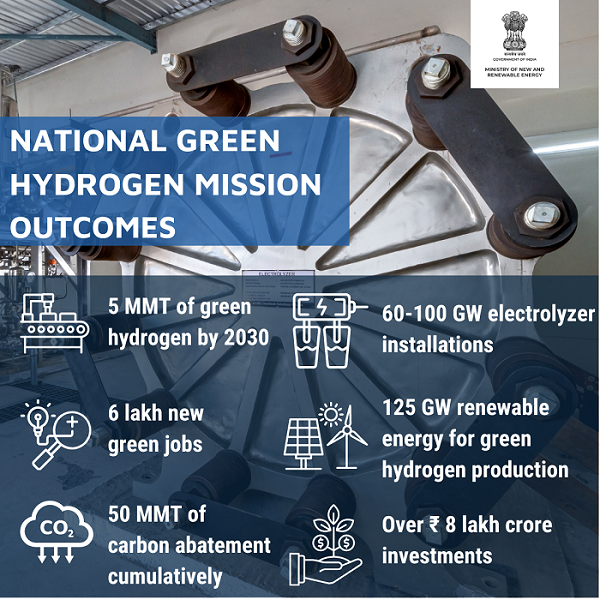Punchline: From Kerala’s ancient sands to futuristic hydrogen hubs, India is turning energy crisis into energy empire.
When Energy Shaped Empires, Could This Century Belong to India?

Coal built the British Empire. Oil built America’s supremacy. Gas shaped the Middle East’s fortune. And now, as the climate clock ticks louder, India is daring to create its empire of clean energy—fueled by thorium from its sacred sands and hydrogen from its sunlit fieldsThis is not an abstract promise. It is a story decades in the making, driven by scientists, policymakers, and industries who refused to give up.

Thorium: The Forgotten Metal That Could Power India for 400 Years
Under the beaches of Kerala, Tamil Nadu, and Odisha is a treasure that Indians never get to hear about—12 lakh tonnes of thorium reserves. Compared to uranium, thorium is cleaner, safer, and much more plentiful. Scientists believe that thorium can generate 500 GW of electricity for four centuries.
- Less waste, more safety: Thorium reactors produce 95% less long-lived waste than uranium ones.
- A national edge: While the US, Japan, and Europe abandoned thorium experiments, India persisted, knowing its future depended on it.

The Untold Story: How Scarcity Turned Into India’s Greatest Nuclear Gamble
In the 1950s, Dr. Homi J. Bhabha studied India’s energy resources and realized: we had little uranium, but endless thorium. While others ignored it, he launched the three-stage nuclear program, betting India’s destiny on a metal the world dismissed.
- Stage 1: Uranium-based Pressurized Heavy Water Reactors (already running).
- Stage 2: Fast Breeder Reactors. In 2024, the Prototype Fast Breeder Reactor (PFBR) at Kalpakkam began core loading—hailed as India’s biggest nuclear milestone in decades.
- Stage 3: Thorium-based Advanced Heavy Water Reactors (AHWR) are being readied to unlock the full treasure.
- For decades, sanctions, funding cuts, and global skepticism slowed India down. Yet, scientists at BARC and Kalpakkam worked tirelessly. When the PFBR finally went critical, it wasn’t just technology—it was the fulfillment of a 70-year dream.
Green Hydrogen: The Futuristic Fuel That Burns Without Smoke or Soot
While thorium secures India’s long-term electricity, green hydrogen is the present-day disruptor. It is hydrogen produced entirely from renewable sources—sunlight and wind—leaving behind only water vapor when used.
- Mission Target: 5 million tonnes annually by 2030.
- Support Base: 125 GW of new solar and wind capacity.
- Investments: ₹19,744 crore allocated; ₹8 lakh crore expected by 2030.
- Jobs: Over 6–7 lakh new green jobs in electrolyzers, transport, and industrial projects.
The Story Behind Hydrogen: From Import Shock to Energy Independence Vision
India’s hydrogen story is born from vulnerability. By 2020, 85% of its oil was being imported by the country, with its economy vulnerable to all oil shocks across the world. Even the International Energy Agency went so far as to alert that India’s energy import bill would reach $250 billion by 2030.
This crisis necessitated innovation. India initiated the National Green Hydrogen Mission in 2023, not just as an answer to climate but also as a defense against dependence on energy.
Today, progress is visible:
- 862,000 tonnes/year production capacity awarded to 19 companies.
- 3,000 MW electrolyzer capacity spread across 15 manufacturers.
- Hydrogen hubs are rising at Kandla, Paradip, and Tuticorin.
- Pilot projects in green steel, hydrogen buses, and shipping fuels are already running.
With Europe spending €470 billion and China racing ahead in solar, India is boldly aiming to capture 10% of global hydrogen demand and become the “Saudi Arabia of Green Hydrogen.”
Why This Energy Revolution Matters to Every Indian Citizen
This is not just a story of policy papers—it’s about how your life will change:
- Stable and cheaper electricity bills with thorium-based reactors.
- Cleaner air in cities as hydrogen buses and trucks replace diesel fleets.
- Lakhs of jobs for India’s youth in renewable energy, hydrogen manufacturing, and advanced nuclear.
- Economic relief: Every 1 MMT of hydrogen replaces billions of dollars in oil and gas imports.
When India saves money on energy imports, that stability trickles down to fuel prices, inflation, and even your household budget.
Yes, the road is tough. But every hurdle is also a doorway:
- Thorium tech is costly today → A chance for Indian scientists to own patents and export designs globally.
- Hydrogen costs $3–6/kg now → India’s race to reach $1/kg could make it the cheapest clean fuel hub on Earth.
- Infrastructure gaps → Every hydrogen pipeline, every electrolyzer factory is a new industry waiting to be built.
Challenges are real, but history shows India thrives when the world doubts it.
From Scarcity to Superpower: Why India’s Energy Story Inspires the World
No other nation has bet its future on a resource the world abandoned (thorium) and a technology the world is just waking up to (hydrogen). By combining the wisdom of the past with the innovation of the future, India is crafting a rare dual-path strategy.
By 2047, when India turns 100 as an independent nation, it could also declare freedom from fossil fuels. That is not just an energy transition—it’s a civilizational leap.
A Call to Every Citizen: Be Part of the Energy Revolution
This is not the government’s journey alone. Every Indian can play a role:
- Adopt green energy—solar rooftops, EVs, clean fuels.
- Support Indian startups working on clean-tech innovations.
- Hold leaders accountable—demand faster clean energy adoption.
Because energy independence is more than policy—it is national pride and survival.
The Century of Thorium, Hydrogen, and India
If the 19th century belonged to coal and the 20th to oil, the 21st may belong to thorium and hydrogen—and India.
From the thorium sands of Kerala to the hydrogen hubs of Gujarat, India is not just lighting homes—it is lighting the future of the planet.
FOR MORE BLOGS – beyondthepunchlines.com

 Add to favorites
Add to favorites








